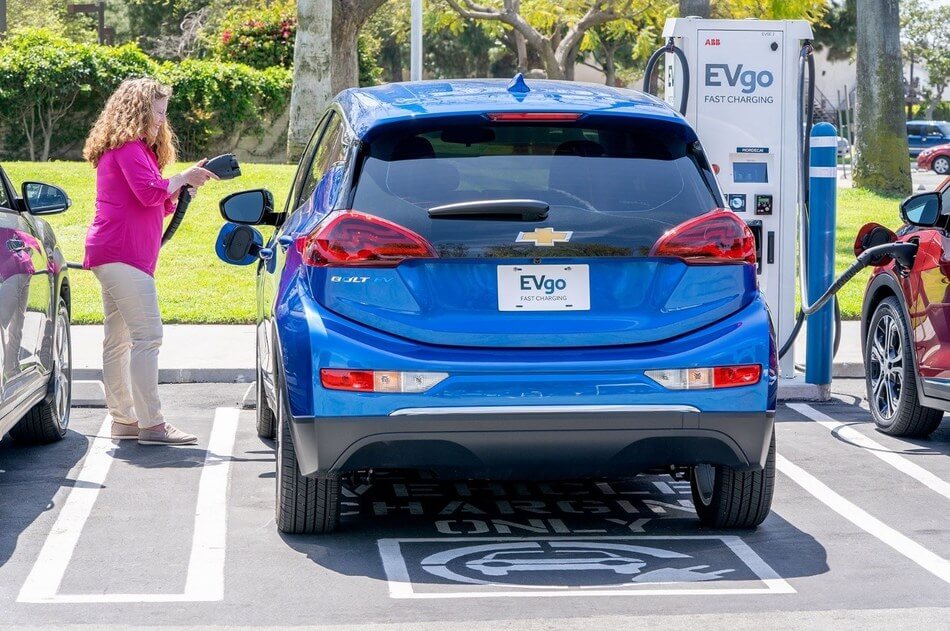EVgo, the nation’s largest public electric vehicle (EV) fast-charging network, announced that it has contracted for 100% renewable energy to power its customers — becoming the first EV charging network in the United States to do so.

EVgo says it is buying a combination of Green-e certified wind and solar energy through its electricity suppliers and REC partners. (Image: EVgo)
According to the U.S. Environmental Protection Agency, nearly 30% of all greenhouse gas emissions in the U.S. come from transportation – the majority of which are generated by passenger cars and other light-duty vehicles – making the sector the nation’s largest source of carbon emissions and therefore, the country’s leading contributor to climate change attributed to human activity.
“At EVgo we understand that our customers value all the ways EVs deliver a delightful driving experience, from better acceleration to eliminating tailpipe emissions,” said Julie Blunden, Executive Vice President for Business Development at EVgo. “EVgo is the national leader in customer satisfaction and we plan to extend that lead with 100% renewable energy powering every mile charged on our convenient and reliable fast charging network.”
EVgo will contract with its energy suppliers and renewable energy certificate (REC) partners to ensure that each gigawatt-hour delivered on its fast-charging network financially supports an operating renewable energy generator in the U.S.
The EV fast-charging company says it powered more than 75 million electric miles in 2018, growing 88% from the prior year. Light-duty EV fleets and rideshare drivers accounted for one-third of electrified miles delivered by EVgo’s network last year. Car share and rideshare EV drivers deliver substantially higher carbon and air quality benefits because they drive three to seven times more miles than personal-use drivers.
EVgo plans to double its network capacity by year-end 2020, dramatically increasing the number of convenient locations for drivers to fast-charge while running errands or having fun at the park. Based on the mix of power sources across its network in 2018, EVgo avoided 17 thousand metric tons of carbon emissions, the leading source of greenhouse gas pollution.
Filed Under: Energy storage, News




